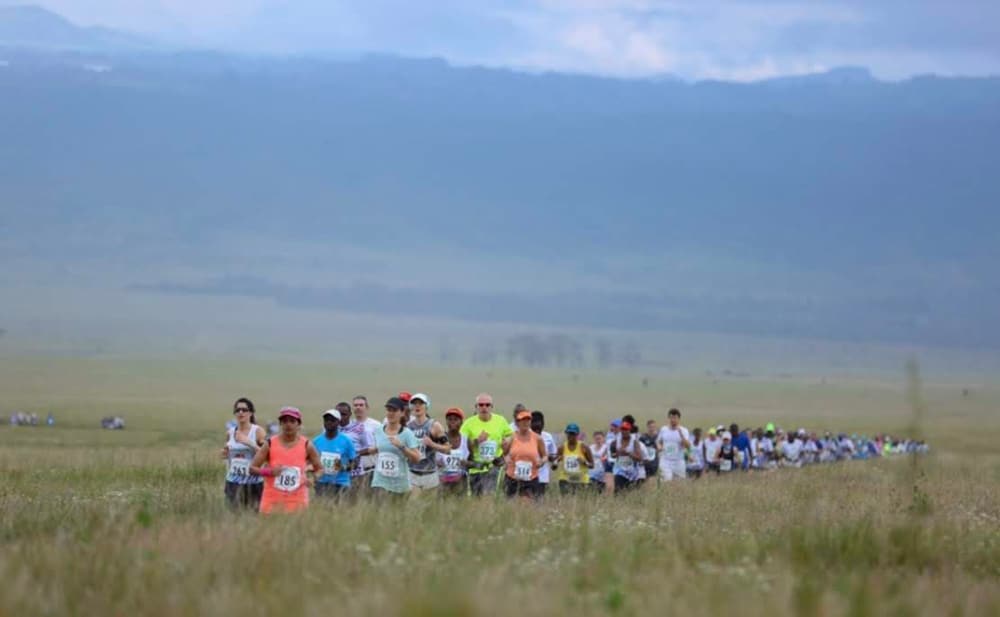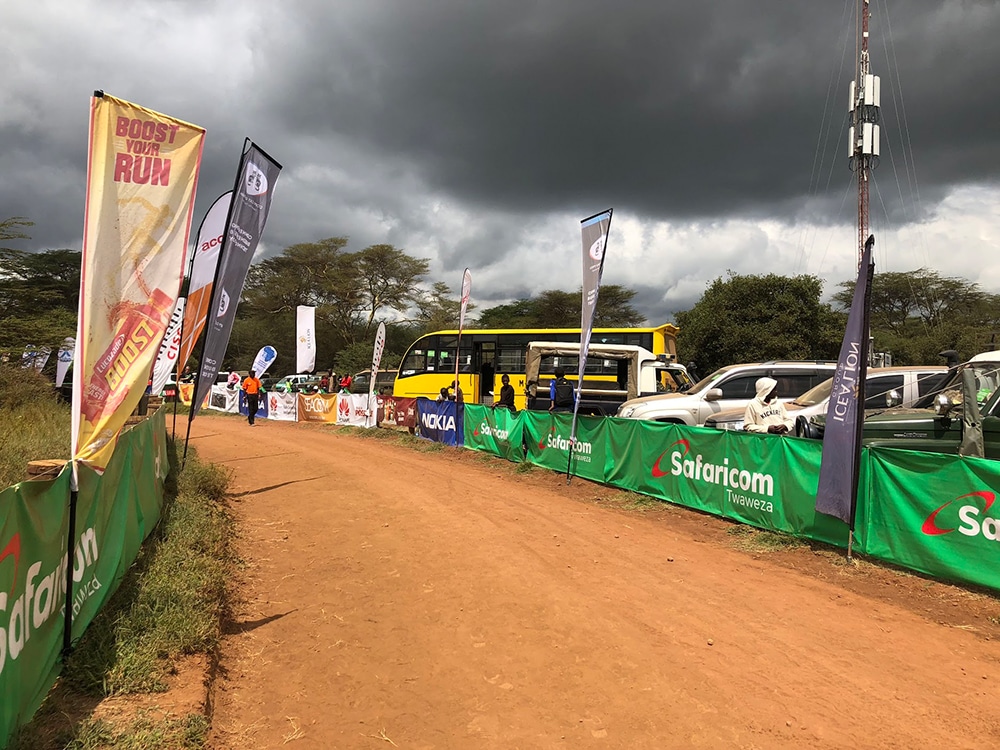Stockholm (HedgeNordic) – The Safaricom Marathon is considered one of the most challenging and at the same time most spectacular marathon in the world as it runs in the wild, at Lewa Wildlife Conservancy Kenya. It is organised every year in June by a charity organization called TUSK, which has been supporting wildlife via education and community development for almost 30 years. Claudia Stanghellini, Head of External Managers at Swedish Pension fund AP3 decided to attempt the Safaricom this year, HedgeNordic and NordSIP amongst others supported her efforts together. Back from her adventure, Stanghellini tells us why she joined, what her strongest moments were and that she is very likely to go back soon.
“One of AP3’s external managers,” she starts, “a leading Emerging Markets manager based in London, has been supporting TUSK for several years. They send a company team to every edition of the marathon. Throughout the years, I heard the manager talking passionately about TUSK and telling wonderful stories about the marathon itself from those who made the trip. As I love wildlife and animals and I train assiduously, I promised myself to, one day, run the Safaricom. This year turned out to be the right one.”
“The finance community is well present at the marathon with different corporate teams attending and raising funds for TUSK,” adds Stanghellini. “Even if I met with several people and corporate teams I knew, I did attend the race as a ‘individual entry’. This trip was 100% private. I paid for my own costs, while raising funds for the TUSK charity from friends and family, who joined NordSIP and HedgeNordic in supporting my project.”

“The trip, the race, the experience, the visit to different TUSK’s projects went beyond my expectations,” remembers Stanghellini nostalgically. “The course is absolutely beautiful: it is set on dirt roads over an undulating 21-kilometre course (the full marathon is 2 laps of the same course). It runs high up an altitude of 1,700 metres across savannah plains, along river banks and through acacia woodlands with stunning views on Mont Kenya. If you look around while running you can spot animals. The course is protected by rangers with the help of a few helicopters that circle around to monitors the big five and keep the course safe. Altitude and heat add to the challenge, but the beauty of the scenery makes everything easier. I really enjoyed the mix of international and local participants. There was also an enthusiastic crowd along the course and at water stations to cheer us along.”
Stanghellini didn’t make the trip only to admire the landscape. She finished the half-marathon in 2 hours, 23 minutes and 23 seconds, and came in 95thposition out of a total of 423 women who finished race. “I was quite pleased with my time,” says Stanghellini, “even if I was lapped 300 meters before the finishing line by the male winner of the full marathon, Kenyan runner Philemon Baaru. The organizers did warn us not to try racing against the professional Kenyans athletes! I was well prepared for the run, both in terms of training and having studies information on the course.”
 One aspect took Stanghellini off-guard. “A school visit the foundation took us to the day before the race was a powerful and unexpected experience. The kids were absolutely lovely. Local communities live a simple life, so far from our own comfortable lifestyle. The kids receive clothes and food from the school; they have so little and yet, they seemed so happy. Solar power now allows several Kenyan communities to afford basic amenities, including light and basic electric appliances. In this bare-bone school we visited, kids had even received iPad to support their education, and of course, they love cell phones.”
One aspect took Stanghellini off-guard. “A school visit the foundation took us to the day before the race was a powerful and unexpected experience. The kids were absolutely lovely. Local communities live a simple life, so far from our own comfortable lifestyle. The kids receive clothes and food from the school; they have so little and yet, they seemed so happy. Solar power now allows several Kenyan communities to afford basic amenities, including light and basic electric appliances. In this bare-bone school we visited, kids had even received iPad to support their education, and of course, they love cell phones.”
“We were all touched by the warm welcome the students gave us,” Stanghellini say. “The first graders sang, and the older kids staged up a show with traditional dances and rhythms to thank us for our contributions. It was an amazing experience.” The funds raised from the marathon by the TUSK foundation supports over 60 schools around Lewa Wildlife Conservancy, as well as health clinics. To counter the devastating impact on Africa’s wildlife caused by poaching, habitat loss and human-wildlife conflicts, TUSK supports and strengthens local communities. The organisation believes that local people and organizations are best positioned to address these threats, but they often are under-resourced and under-funded. Furthermore, strategic conservation can empower local communities and improve livelihoods. Through partnerships with selected conservationists across Africa, TUSK provides greater protection over 10 million acres of land and more than 40 different endangered species while benefitting more than 1 million people.
Going back is a no-brainer for Stanghellini. “I will definitely run the Safaricom again and I will be looking for sponsors,” she says with a smile. “In fact, most of the people I have met at Lewa have run the race multiple times which is a testimony to how unique and intense the whole experience is. It is a fantastic way to combine running in a stunning setting, with contributing to a good cause, supporting wildlife conservation and education.”

Pictures with kind permission by Claudia Stanghellin
